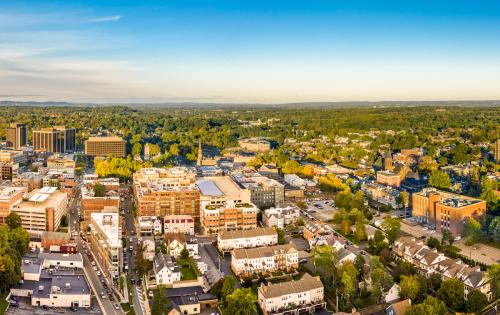Gary Burtless and Daniel J. Ikenson debate bailing out the Big Three. Today’s question: In their business plans submitted to lawmakers on Tuesday, did the Big Three executives ask Congress for the right things? What kind of “strings” should be attached to any financial deal for Detroit?
Counterpoint: Gary Burtless
Everyone agrees that a commercial bank would not make a loan to a company in the situation you describe. Observers also agree that all of the Big Three are hemorrhaging cash at an unsustainable rate and that at least two of them face the prospect of running out of money soon. The crisis in the industry is the reason Congress is considering offering the companies credit or loan guarantees to keep them afloat. Commercial lenders are unwilling to take on the risk of making new loans, and private investors are steering clear of the auto industry and its problems. The U.S. government is the only institution with the resources and time horizon to accept the risk of huge new loans.
If the Washington wants to extend credit to automakers, what should it require from the borrowers?
Giving federally backed credit to distressed American companies with strict conditions is nothing new. In 1979, a federal loan guarantee was provided to Chrysler, which was then on the verge of bankruptcy. The loan guarantee worked because the federal government required Chrysler to take cost-cutting measures that eventually helped make the company profitable. Chrysler obtained wage concessions from its employees, price concessions from its suppliers and additional non-government-guaranteed investment from private lenders and investors. It downsized and rationalized its operations, and it sold off some of its profitable businesses to raise cash. The loan guarantees allowed Chrysler to sell off its profitable business units after 1980 in a more favorable market; it did not have to sell them at distress prices. In exchange for the loan guarantee, Chrysler gave stock warrants to the U.S. Treasury, allowing taxpayers to benefit when Chrysler’s stock price soared after its return to profitability.
In light of Chrysler’s dramatic turnaround, it seems fair to say the federal rescue package worked. With help from the loan guarantees and under the pressure of the government’s tough loan requirements, Chrysler eventually emerged from its troubles as a smaller, better-managed company. Taxpayers earned a hefty profit on the Chrysler stock warrants.
After 9/11, the Bush administration offered a lifeline to the nation’s financially strapped airlines. In addition to $5 billion in grants, the airlines were offered up to $10 billion in federal credit and loan guarantees if they could make a strong case to the U.S. Treasury’s Air Transportation Stabilization Board. The government required the board to favor airlines with the best business plans and the highest likelihood of repaying the loans without a loss to taxpayers. The board’s rules required that it to give preference to applicants that promised to quickly repay the loans and provide the government with stock warrants. Between 2001 and 2003, the board accepted applications for almost $1.2 billion in loan guarantees from seven airlines, including America West Airlines and U.S. Airways, and it turned down applications from nine carriers, including United Airlines. Almost all of the guaranteed loans have been repaid or resold without the government guarantee, which means the government no longer bears any risk if the borrower defaults.
Past experience with federal loan guarantees suggests that any rescue package for the Big Three should require them to take major cost-cutting measures and devise a business plan that promises to make them profitable within a specified period; say, the next four years. Moreover, in exchange for the guarantees, the firms should be required to give stock warrants to the U.S. Treasury so taxpayers can benefit from future stock appreciation if the companies eventually become profitable.
Did the Big Three offer proposals that meet the minimum requirements just described? May I respectfully suggest that no one knows the answer to that question. The proposals outlined by the automakers represent opening salvos in a negotiation. They do not represent the final terms of a credit agreement. If Congress decides to offer loans or loan guarantees, as I think it should, it must leave negotiation of the terms up to a competent executive board (something similar to the Air Transportation Stabilization Board). The board would then negotiate with each automaker about the specific terms of any federal credit deal. The board should be willing to say no to any reorganization plan that does not seem likely to return a company to long-term profitability.
I agree that the first order of business is to devise a reorganization and cost-cutting plan that puts an automaker on the road to profitability. If Congress wants to encourage auto companies to invest in green vehicles, it should do so with incentives that cover all car makers or car buyers, not just the Big Three. The future fuel efficiency of U.S. vehicles is a separate matter that should not confuse our negotiations with the Big Three about the terms of any short-term credit agreement. The main goal of any rescue package must be to force automakers, auto workers, parts suppliers and creditors to adopt a rational plan that will make some or all of the U.S. automakers profitable in the long run.
Visit the Los Angeles Times for the Point to Gary Burtless’s Counterpoint »



Commentary
Op-edBig Three Automakers Ask for Money – Again
December 3, 2008